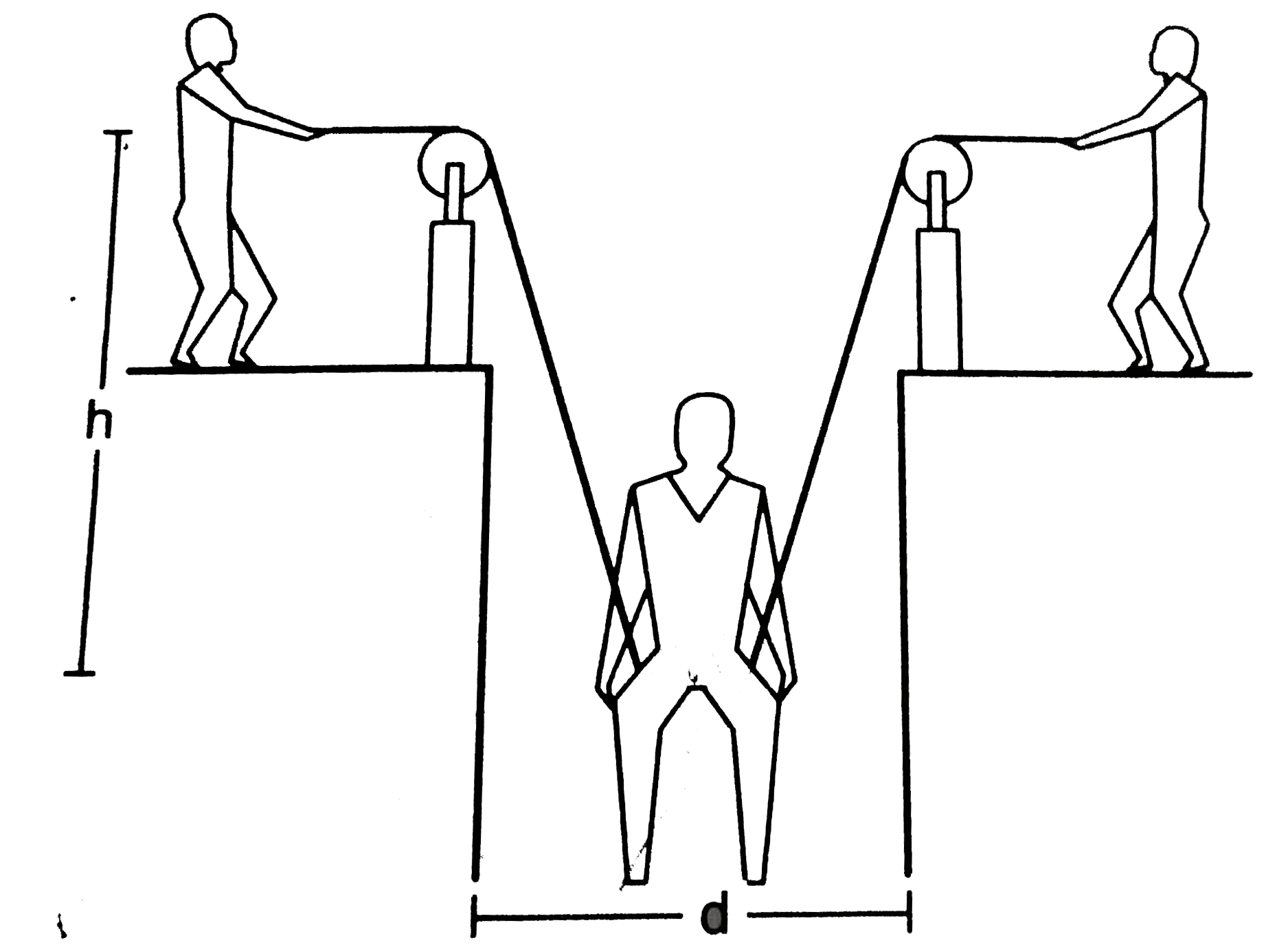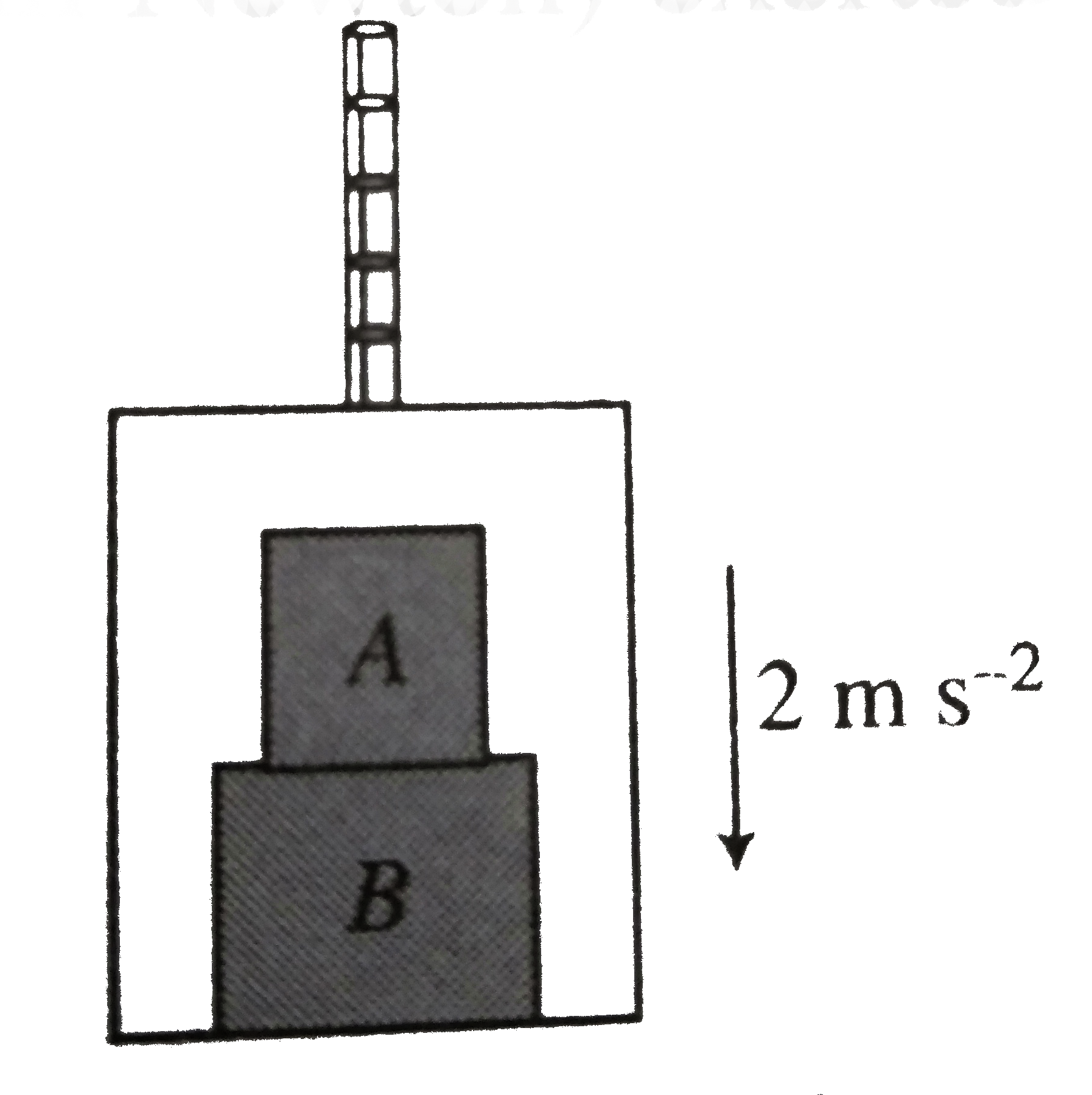a block is kept on the floor of an elevator at rest. The elevator starts descending with an acceleration of 12ms2. Find the displacement of the block during the first 0.2 s after the start. Take g=10ms2.
To solve the problem, we need to analyze the motion of the block inside the descending elevator. Here are the steps to find the displacement of the block during the first 0.2 seconds after the elevator starts descending:
Step 1: Understand the scenario
The elevator is descending with an acceleration of a=12m/s2 and the acceleration due to gravity is g=10m/s2. Since the elevator's acceleration is greater than the acceleration due to gravity, the block will not remain in contact with the floor of the elevator after it starts descending.
Step 2: Determine the effective acceleration of the block
When the elevator descends with an acceleration greater than gravity, the effective acceleration acting on the block can be calculated as:
aeffective=g−a=10m/s2−12m/s2=−2m/s2
This negative sign indicates that the block is accelerating downwards relative to the elevator.
Step 3: Use the kinematic equation for displacement
Since the block is in free fall relative to the elevator, we can use the kinematic equation for displacement:
s=ut+12at2
where:
- s is the displacement,
- u is the initial velocity (which is 0 since the block starts from rest),
- a is the effective acceleration (−2m/s2),
- t is the time (0.2 seconds).
Step 4: Substitute the values into the equation
Substituting the values into the equation:
s=0⋅0.2+12⋅(−2)⋅(0.2)2
Calculating this step-by-step:
s=0+12⋅(−2)⋅0.04
s=12⋅(−0.08)=−0.04m
Step 5: Convert the displacement to centimeters
Since −0.04m is equivalent to:
−0.04m=−4cm
The negative sign indicates that the block has moved downwards relative to the elevator.
Final Answer
The displacement of the block during the first 0.2 seconds after the elevator starts descending is 4cm downwards.
---
The elevator is descending with an acceleration of a=12m/s2 and the acceleration due to gravity is g=10m/s2. Since the elevator's acceleration is greater than the acceleration due to gravity, the block will not remain in contact with the floor of the elevator after it starts descending.
When the elevator descends with an acceleration greater than gravity, the effective acceleration acting on the block can be calculated as:
aeffective=g−a=10m/s2−12m/s2=−2m/s2
This negative sign indicates that the block is accelerating downwards relative to the elevator.
Since the block is in free fall relative to the elevator, we can use the kinematic equation for displacement:
s=ut+12at2
where:
- s is the displacement,
- u is the initial velocity (which is 0 since the block starts from rest),
- a is the effective acceleration (−2m/s2),
- t is the time (0.2 seconds).
Substituting the values into the equation:
s=0⋅0.2+12⋅(−2)⋅(0.2)2
Calculating this step-by-step:
s=0+12⋅(−2)⋅0.04
s=12⋅(−0.08)=−0.04m
Since −0.04m is equivalent to:
−0.04m=−4cm
The negative sign indicates that the block has moved downwards relative to the elevator.
The displacement of the block during the first 0.2 seconds after the elevator starts descending is 4cm downwards.
Topper's Solved these Questions
- NEWTON'S LAWS OF MOTIONBOOK - HC VERMA ENGLISHCHAPTER - NEWTON'S LAWS OF MOTIONEXERCISE - Questions for short Answer
17 Videos
- NEWTON'S LAWS OF MOTIONBOOK - HC VERMA ENGLISHCHAPTER - NEWTON'S LAWS OF MOTIONEXERCISE - Objective -2
9 Videos
- LAWS OF THERMODYNAMICSBOOK - HC VERMA ENGLISHCHAPTER - LAWS OF THERMODYNAMICSEXERCISE - All Questions
64 Videos
- PHYSICS AND MATHEMATICSBOOK - HC VERMA ENGLISHCHAPTER - PHYSICS AND MATHEMATICSEXERCISE - Question for short Answer
14 Videos
Similar Questions
A body starts from rest with a uniform acceleration of 2 m s−1 . Find the distance covered by the body in 2 s.
View SolutionA body moves from rest with a uniform acceleration and travels 270 m in 3 s. Find the velocity of the body at 10 s after the start.
View SolutionA block of mass m is kept on a platform Platform starts moving upwards with an acceleration of g2 . Find the work done by the normal force on the block in the first one second.
View SolutionA block of mass 2 kg rests on the floor of an elevator , which is moving down with an acceleration 'g' , then the apparent weight of the block is [ take g = 10m/s2 ]
View SolutionThe elevator shown in figure is descending with an acceleration of 2ms2. The mass of the block A is 0.5 kg. What force is exerted by the block A on the block B?

View SolutionSuppose the ceiling in the previous problem is that the elevator which is going up with an acceleration of 2.0ms2. Find the elongations.
View SolutionA block is placed over a plank. The coefficient of friction between the block and the plank is μ=0.2. Initially both are at rest, suddenly the plank starts moving with acceleration a0=4m/s2. The displacement of the block in 1 is (g=10m/s2)
View SolutionThe elevator shown in fig. is descending with an acceleration of 2ms−2. The mass of the block A=0.5kg. Find the force (in Newton) exerted by block A on block B.

View SolutionThe elevator shown in fig. is descending with an acceleration of 2ms−2. The mass of the block A=0.5kg. Find the force (in Newton) exerted by block A on block B.

View SolutionA man of mass 40kg is standing on a weighting machine kept on the floor of an elevator which is moving up with an acceleration of 2m/s2 Find the reading of the weighing maching.

View Solution
